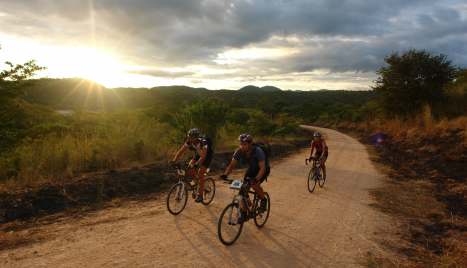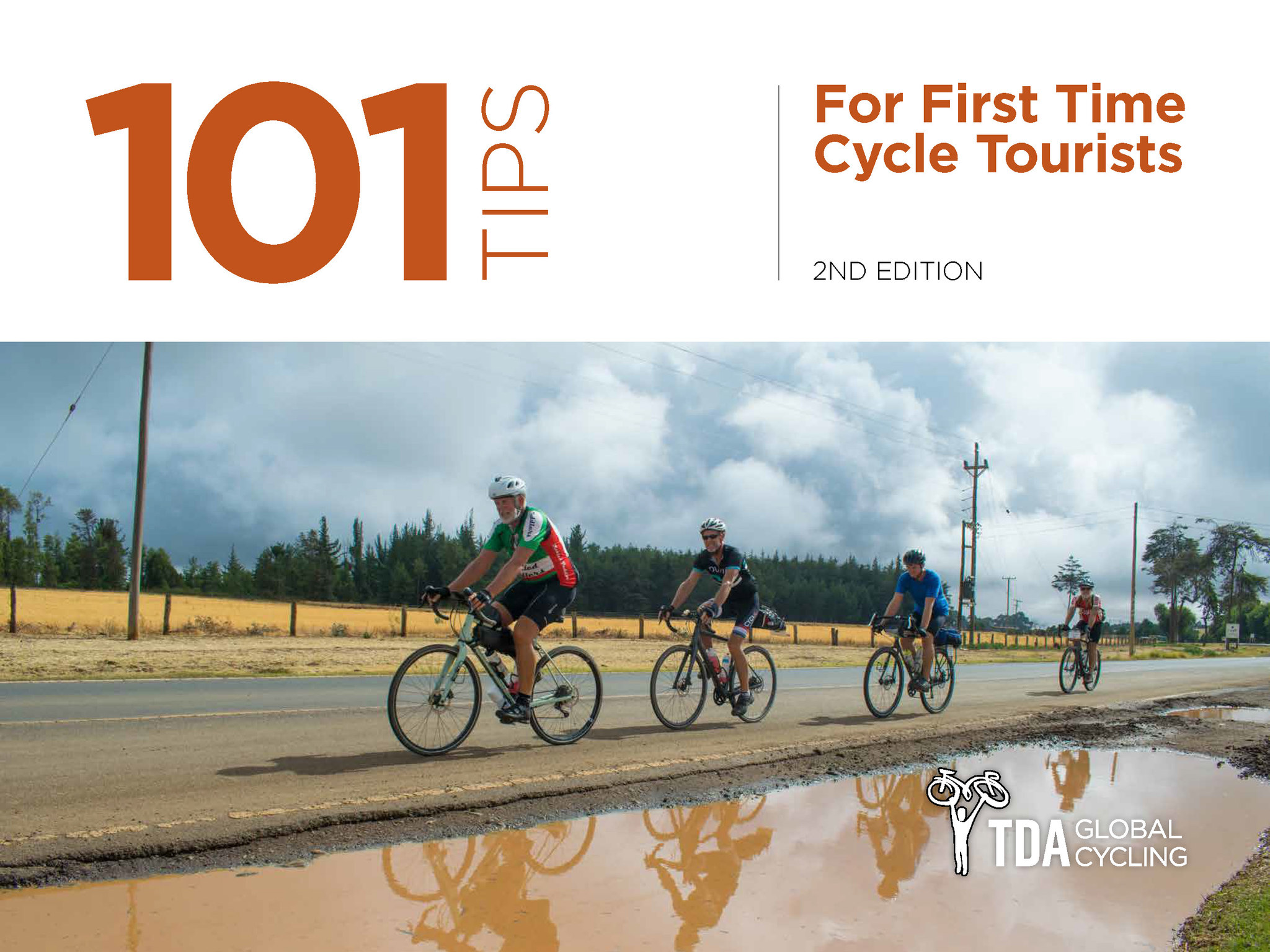Blog
Choosing The Best Brakes For Long Distance Cycle Touring
HOW TO PREPARE: An 8 part series to get you ready for your first TDA tour. Click here to read more.
Are you looking for a new bike for your next tour, and wondering what type of brakes would be the best choice? Read on to find out. In this post, we will explain the differences between the different types of brakes, the pros and cons of each type, and share our recommendation of the best brake type for long distance cycle touring.
Rim Brakes

Rim brakes are the oldest style of bicycle brakes. There are not many bikes still being sold today with rim brakes. Rim brakes work by squeezing the brake pads against the wheel’s rim in order to slow you down.
Pros:
- Light weight
- Low cost
- Ease of maintenance
Cons:
- Less braking power
- Poor performance in wet / muddy conditions
- Brake fade on long descents
- Require the most effort at the brake lever
Disc Brakes
While disc brakes were originally used mostly on mountain bikes, these days you will have a hard time finding a bike of any kind that is not using disc brakes. Disc brakes are much like the brakes found on a car – a metal disc is mounted to the hub of the wheel, and the brake pads squeeze against the disc, rather than against the rim of the wheel.
Mechanical Disc Brakes

Mechanical disc brakes use a cable to connect the brake lever to the brake caliper, much like a rim brake or a mechanical shifter.
Pros:
- Reasonable cost
- Easier maintenance than hydraulic discs
- More braking power than rim brakes, especially in bad conditions
Cons
- Can require frequent adjustment
- Tendency to make noise
- Less power than hydraulic discs
Hydraulic disc brakes

Hydraulic disc brakes use a hose filled with hydraulic fluid (either mineral oil or DOT brake fluid) to connect the lever and caliper.
Pros:
- Most powerful
- Least effort required at the lever
- Best performance in poor conditions
Cons:
- Most expensive
- Requires compatible shifters (on drop bar bikes)
- Most complex maintenance
Our Recommendation
If you are looking to buy a new bike, or selecting between multiple bikes that you already own, we strongly recommend choosing a bike with disc brakes. The braking power of disc brakes compared to rim brakes is much higher, especially in rainy or muddy conditions, or on long descents. If, on the other hand, you already have a bike with rim brakes, you can certainly still ride it on a long distance tour – as long as you are willing to put up with the limited performance, especially in bad weather and on long descents.
Choosing between mechanical and hydraulic disc brakes mostly comes down to a personal choice of cost vs. performance – either option would be a good choice.
Suggested Spare Parts & Pre-Tour Maintenance
Rim brakes, and mechanical disc brakes:
- Bring brake pads (one full set (four pads total) for trips less than six weeks, two sets for longer trips)
- Pack one or two brake cables and housing
- Remember to replace cables and housing before your trip
- Be sure to replace brake pads if more than 50% worn
Hydraulic disc brakes:
- Bring brake pads (one full set (four pads total) for trips less than six weeks, two sets for longer trips)
- Pack a small bottle of compatible brake fluid (usually around 100ml)
- Get a full brake bleed service done before your trip, check brake pads
- Be sure to replace brake pads if more than 50% worn
How to Prepare
An 8 part series to get you ready for your first TDA tour. Click here to read more.
 REGISTER NOW
REGISTER NOW




Leave a Comment for "Choosing The Best Brakes For Long Distance Cycle Touring"